새 몸 (New Body)
2025. 6. 17 – 9. 6 | [VISIT] ARARIO MUSEUM TAPDONG CINEMA
박웅규
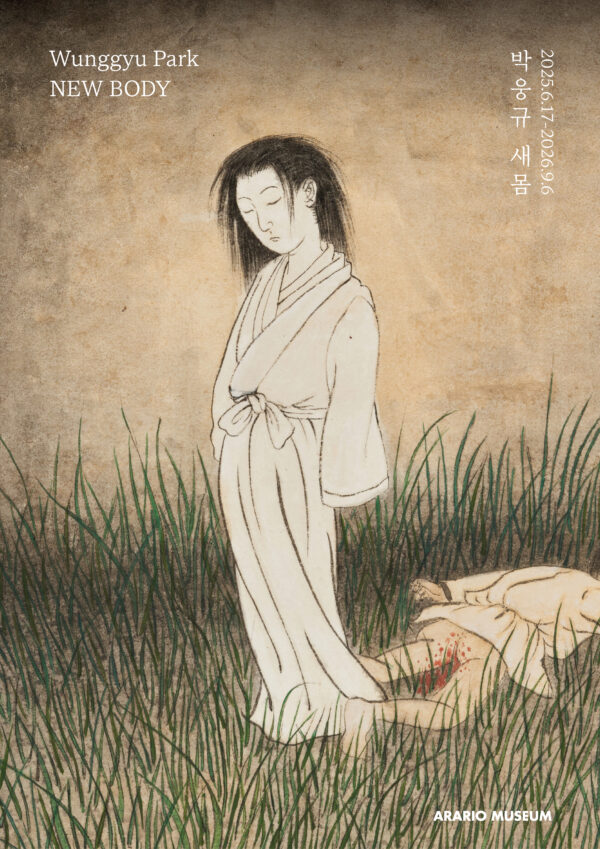
박웅규, <새 몸> 포스터 ⓒ 2025 아라리오뮤지엄
아라리오뮤지엄은 탑동시네마 ‘프로젝트 언더그라운드’에서 박웅규의 개인전 《새 몸》을 개최한다. 박웅규는 종교화의 형식을 차용해 혐오·공포·더러움 등의 감각을 불러일으키는 ‘부정성’을 소재로 다양한 시리즈 작업을 선보여 왔다. 이번 전시에서는 불교 회화의 형식과 설화 구조를 빌려 부정성을 상징하는 존재에 새로운 서사를 부여한 ‘유사-설화’ 시리즈 <팔상도>와 <구상도>를, 두 시리즈의 모티브가 된 작품과 함께 소개한다. 이를 통해 작가가 구축해온 조형적 태도와 그 변화의 흐름을 하나의 맥락 속에서 살펴보는 자리를 마련한다.
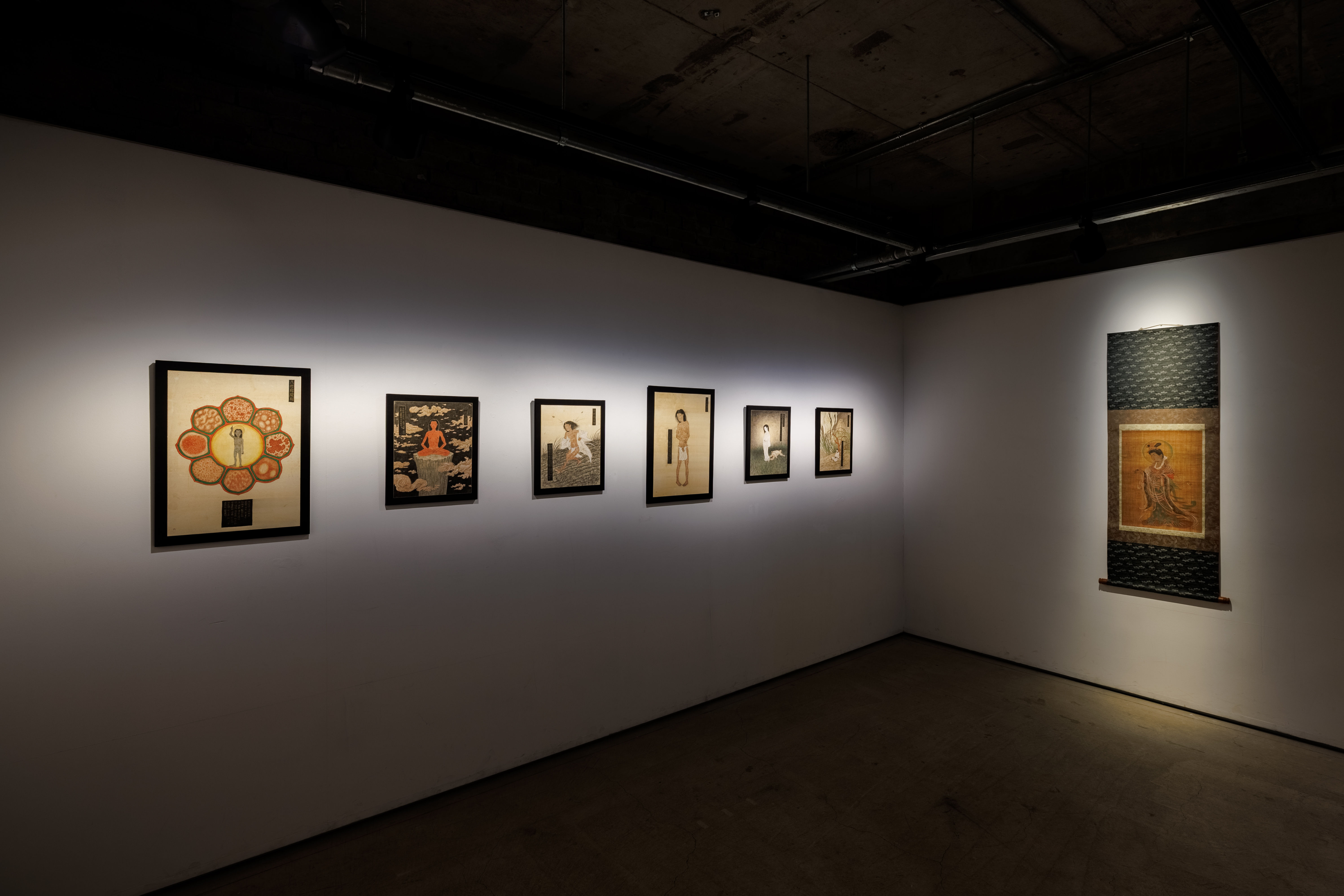
전시 전경 (1) ⓒ 2025 아라리오뮤지엄
박웅규는 어린 시절 종교적 도상에서 느꼈던 억압과 공포, 그리고 반복되는 종교화의 형식이 본래의 의미를 상실한 껍데기처럼 느껴졌던 경험을 ‘부정성’을 다루는 작업의 출발점으로 삼는다. 그의 작업은 교리를 시각적으로 공고히 하고 삶을 통제하는 방식으로 작동해 온 종교화의 형식을 전유하며, 개인적인 부정성과 대면하고 이를 통제·해소하기 위해 독자적인 조형 질서를 구축하는 방식으로 전개되어 왔다. 특히 불화의 형식을 참조해 본래 화면 속 신성한 존재들을 벌레, 소의 내장, 비천한 존재 등 부정적 정서와 힘을 환기하는 대상으로 치환함으로써, ‘정(正)’과 ‘부정(不正)’의 경계를 교란하는 작업을 이어가고 있다.
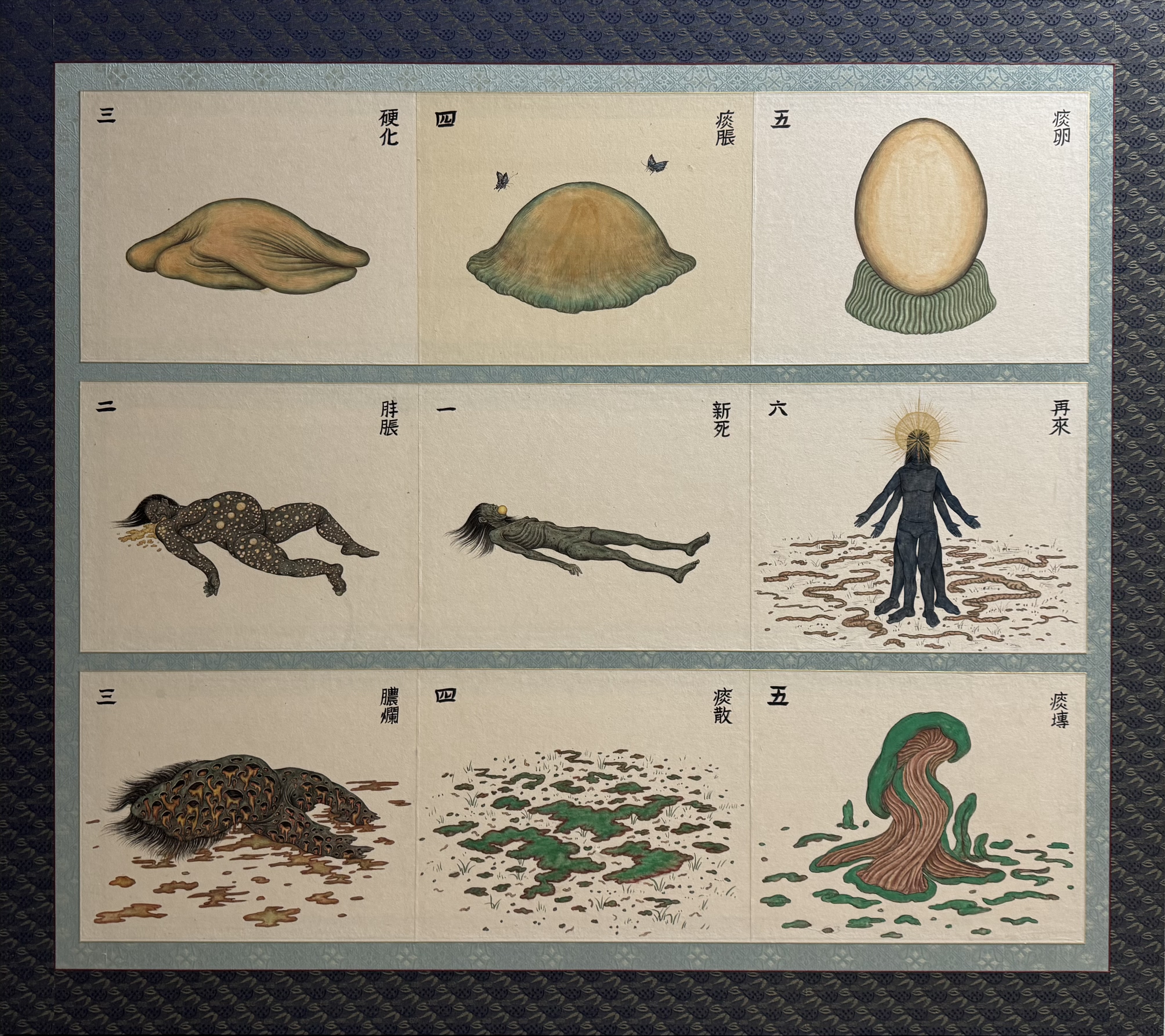
박웅규, 구상도, 2025, 종이에 안료, 88.5 x 108cm ⓒ 2025 박웅규
작가가 본격적으로 불교 미술에 주목하게 된 계기는 일본 교토박물관에서 불교의 행운을 상징하는 신 길상천(吉祥天)의 고전 불화를 접하면서이다. 이후 『열반경(涅槃經)』에 전해지는 길상천과 그의 자매 흑암천(黑暗天)의 설화에서 영감을 받아, 추악한 외모로 다니는 곳마다 재앙을 불러오는 흑암천을 주제로 한 작품을 여럿 선보인다. 그 시작점인 <더미 No.81>은 길상천의 도상을 흑암천으로 대치해 원작의 구도를 충실히 재현한 2022년 <귀불(鬼佛)> 시리즈의 일부다. 이 작품은 이상적 존재를 형상화하는 불화의 형식을 부정적 존재로 전치함으로써 ‘정-부정’에 관한 작가의 일관된 탐구를 드러낸다. 동시에 <팔상도>와 <구상도> 연작의 모티브로 기능하며, 이번 전시의 서사적 뿌리를 제공한다.
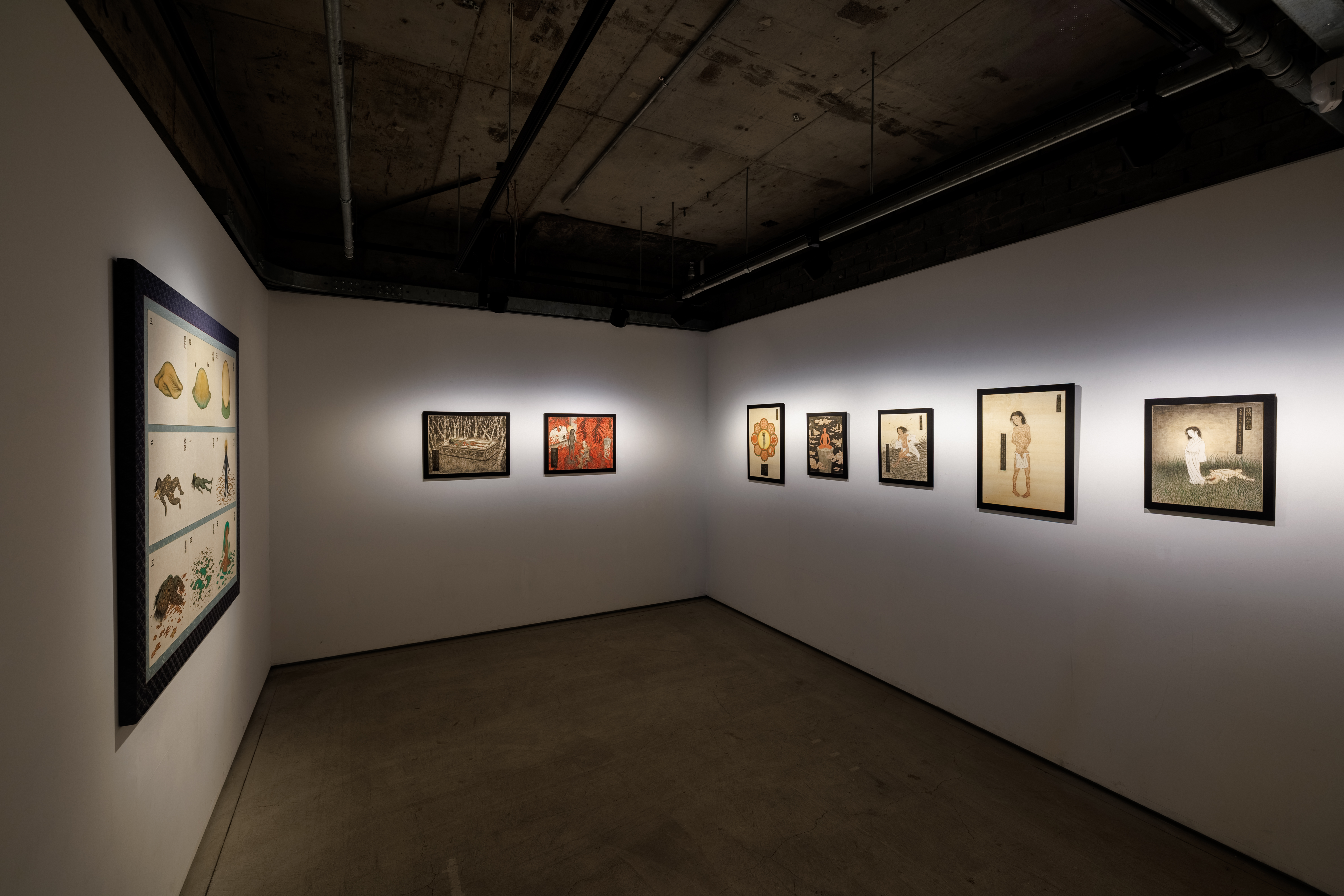
전시 전경 (2) ⓒ 2025 아라리오뮤지엄
<팔상도>는 흑암천의 일대기를 작가의 피부 질환 경험과 결부시켜 구성한 유사-설화 시리즈다. 2023년 작 <십우도>와도 연결되는 이 작품은 불교에서 부처 일대기의 주요 사건을 여덟 장면으로 묘사하는 ‘팔상도(八相圖)’의 구조를 작가 특유의 조형 언어와 서사로 재구성한 것이다. 여인은 소를 먹고 잠든 소년에게서 태어난 존재로, 피부병으로 인해 사회로부터 소외되며 은둔 생활을 시작한다. 여덟 가지의 피부 질환을 앓으며 몸이 검푸르게 변해 일종의 깨달음에 도달한 여인은, 이를 전파하고자 사람들 곁으로 돌아가지만 그의 행로마다 불행이 뒤따른다. 사람들은 그를 ‘흑암녀’라 부르게 되고, 여인은 쓸쓸히 죽음을 맞이하는 것으로 장면은 마무리된다.
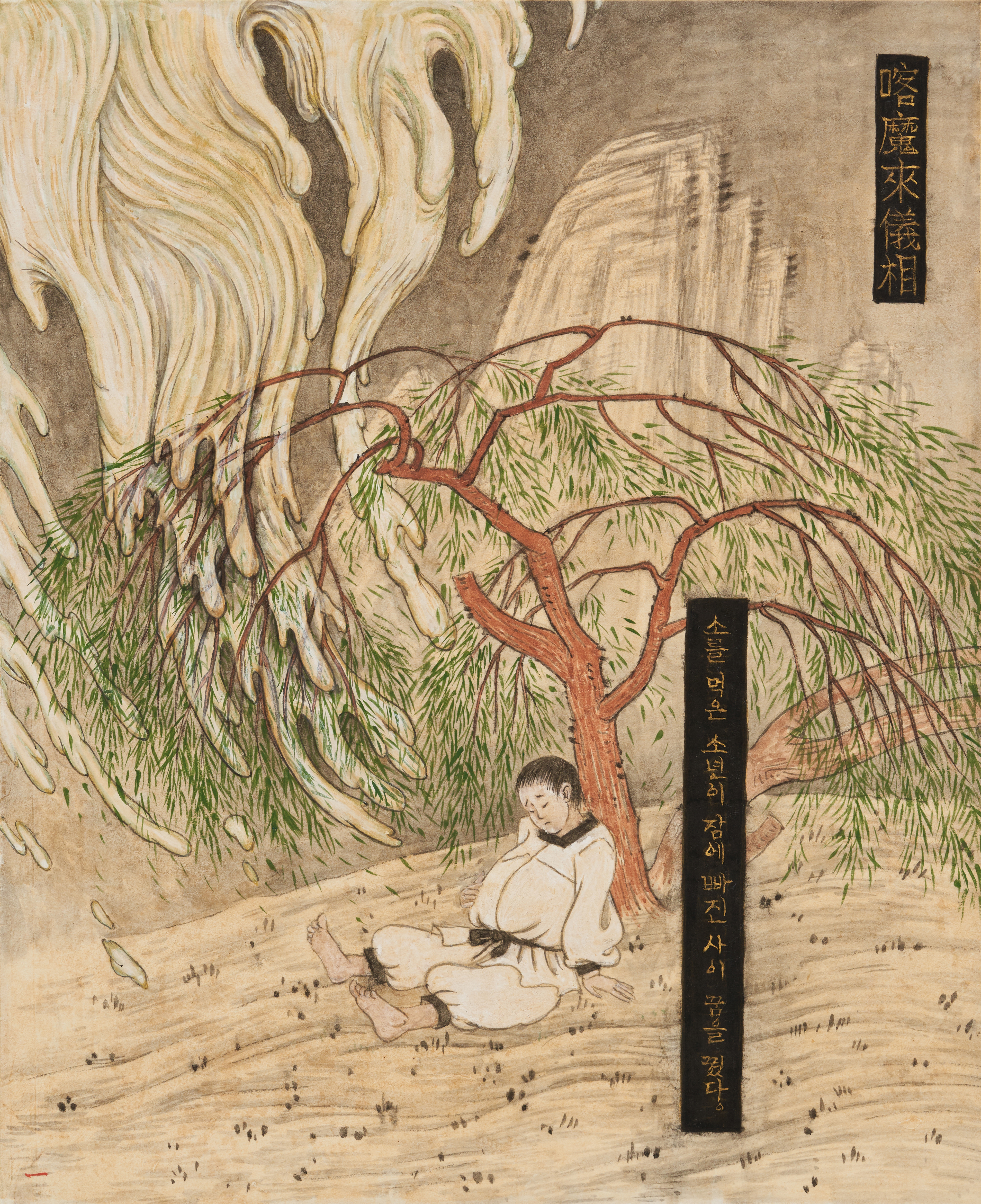
박웅규, 객마래의상(喀魔來儀相), 2024, 종이에 안료, 36 x 29.5cm (Frame 41.5 x 34.5 cm) ⓒ 2025 박웅규
<구상도>는 <팔상도>의 마지막 장면과 연결되며, 흑암녀의 시신이 부패를 거쳐 새로운 육체로 재탄생하는 아홉 개의 장면으로 구성된다. 중앙의 시신은 노란 수포가 피어나며 부풀고, 화면은 위와 아래 두 방향으로 부패의 과정을 보여준다. 위쪽은 응축되어 단단한 알의 형태로 변화하는 경화 과정을 보여주며, 아래쪽은 융해와 흩어짐의 과정을 거친다. 이처럼 상반된 흐름은 마지막 장면에서 새로운 육체의 탄생으로 귀결된다. <구상도>는 불교에서 인간이 죽은 뒤 시신이 백골로 변하는 과정을 그린 ‘구상도(九相圖)’의 구조를 차용하되, 정-부정의 혼용을 상징하는 이중의 부패 과정을 거쳐 새로운 몸이 부활하는 서사로 확장된다.

박웅규, 흑암전법상(黑闇轉法相), 2024, 종이에 안료, 40 x 51.5 cm (Frame 46.8 x 57.3 cm) ⓒ 2025 박웅규
이번 전시는 각 시리즈가 유기적으로 맞물리며, 박웅규가 확립해 온 질서와 세계관을 하나의 서사적 맥락에서 조망한다. <더미 No.81>에서 <팔상도>, <구상도>로 이어지는 흐름은 부정성을 상징하는 흑암천의 일대기와 죽은 몸(시신)의 여정을 따라, ‘단단함’과 ‘흐트러짐’의 상반된 과정을 경유해 ‘새로운 몸’의 탄생으로 수렴된다. 이는 불화 형식을 바탕으로 부정성을 시각적으로 탐구해 온 박웅규의 작업 여정을 집약함과 동시에, 전통 종교화 형식의 참조를 넘어서 독자적 조형 체계 아래 새로운 형상을 구축하는 단계로 나아가고 있음을 암시한다. 박웅규는 ‘정’과 ‘부정’의 경계를 가로지르며, 신성함과 비천함, 질서와 위반, 통제와 해소가 교차하는 고유한 조형 질서를 꾸준히 탐색해 왔다. 허구적으로 창조된 이야기 구조는 반복과 축적을 통해 그의 내적 논리를 지탱하는 서사적 기반이 될 것이다. 《새 몸》은 이러한 탐구의 총합이자, 그 다음 장으로 이어질 예고편이 되기를 기대한다.
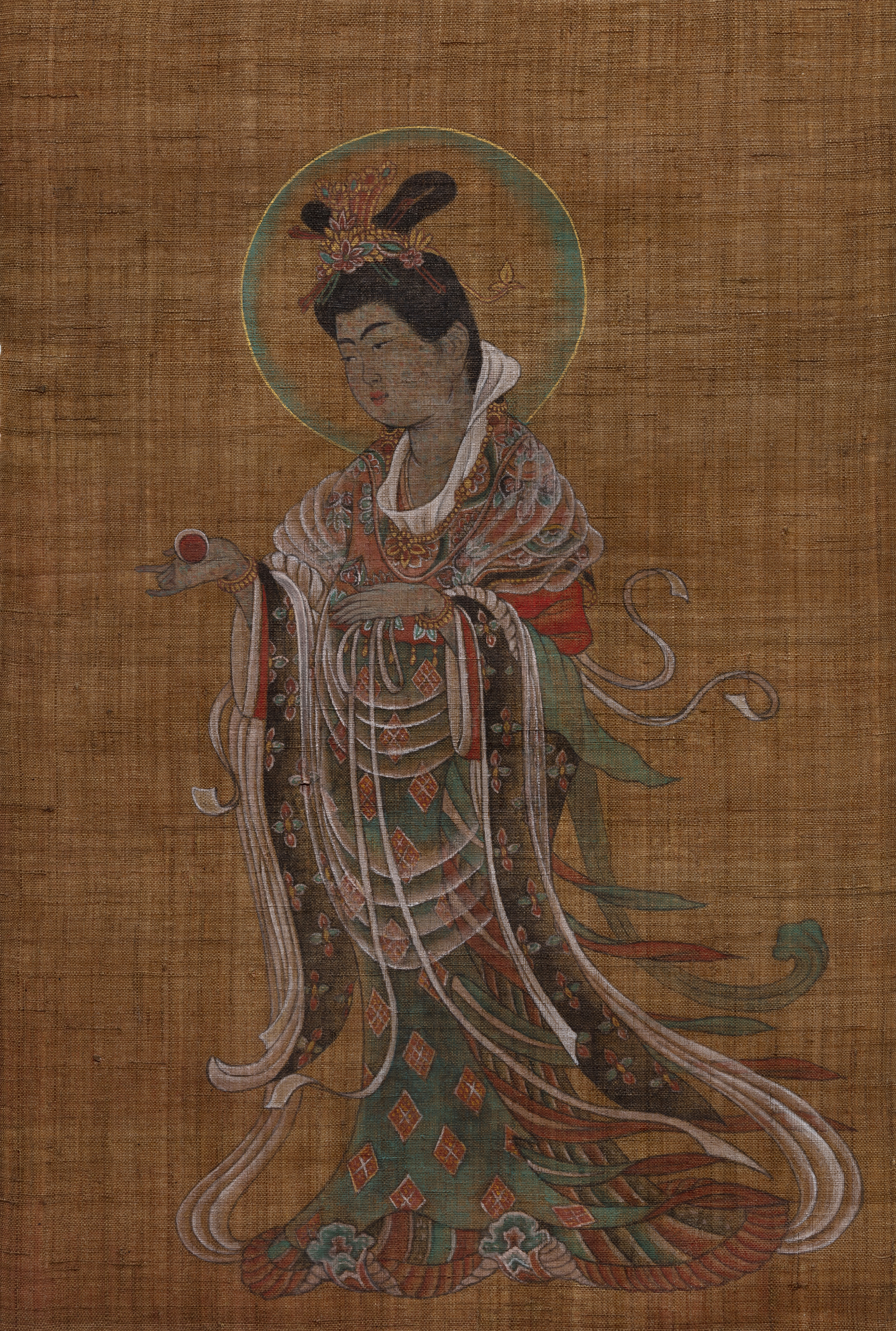
박웅규, Dummy No.81, 2021, 삼베에 안료, 53 x 35 cm ⓒ 2025 박웅규
아라리오뮤지엄 탑동 시네마
제주특별자치도 제주시 탑동로 14
+82 64 720 8201
[VISIT] ARARIO MUSEUM TAPDONG CINEMA
- Address
- 제주특별자치도 제주시 탑동로 14
- Dates
- 2025. 6. 17 – 9. 6
- Artists
- 박웅규











